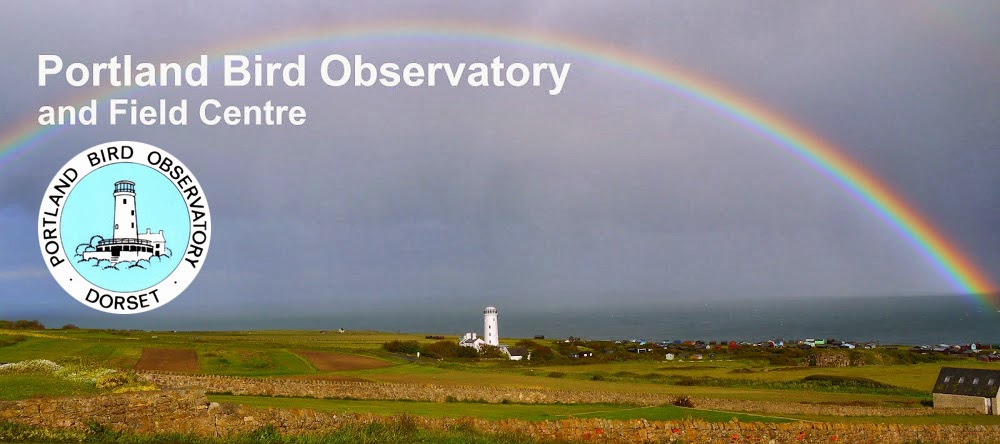A very crisp dawn today but thereafter it was perfect winter birding conditions all the way. Rook is hardly a big deal bird on the mainland but 3 today at Barleycrates Lane were an unusual mid-winter sight for the island; 2 Redwings at Weston and a Fieldfare at the Bill (along with a Snipe heard calling overhead there after dark) were pretty well expected arrivals given the current low temperatures. Run of the mill fare included a Bonxie still lingering off the Bill, 2 Red-throated Divers also through there and 3 Redpolls, 2 Purple Sandpipers and 2 Black Redstarts on the land. The 2 Blackcaps and 2 Chiffchaffs at Southwell were joined by the first Goldcrest there for a while, with another Blackcap - along with a Black Redstart - at Weston. The Rosy Starling was again at Easton, Black-necked Grebes increased a little to 12 at Portland Harbour, where the 2 Black-throated Divers and single Red-necked Grebe were still about.
There's always plenty of bug action on and around Tree Mallows to help keep the Southwell Chiffchaffs sustained © Pete Saunders:
So, the curtain falls on what's surely been the most peculiar year in PBO's history.
Sadly, the fact that 2020 will live long in the memory had rather less to do with the quality of the natural history on offer than the uniquely disruptive circumstances associated with the ongoing global pandemic. In terms of the effects of this event on recording, we escaped lightly: thanks in no small measure to the efforts of a hard core of local residents the daily census was maintained throughout; whilst, during the spring at least, the two staff members had the rare pleasure of undertaking the entirety of the ringing programme themselves – every cloud has a silver lining! The losers were our guests: with the Observatory entirely closed for the bulk of the spring migration period and only partially open for the rest of the year, many of our stalwart regulars had to forgo their annual visits – we really felt for them and can only hope that some semblance of normality returns as 2021 unfolds.
Bird-wise, an autumn Arctic Redpoll – a wholly unexpected
first for the island – was the year’s highlight, whilst a wonderful summer
influx of Balearic Shearwaters brought with them the year’s big crowd-puller in
the form of a putative Yelkouan Shearwater. A varied roll call of lesser
rarities included a stunning dark-morph Montagu’s Harrier, 2 Red-footed
Falcons, a Woodchat Shrike and a Blyth’s Reed Warbler in spring, half a dozen
Rosy Starlings and another Blyth’s Reed Warbler during the summer and 4 Great
Shearwaters, 2 Melodious Warblers and singles of Glossy Ibis, Kentish Plover,
White-rumped Sandpiper, Olive-backed Pipit, Western Bonelli’s Warbler and
Radde’s Warbler amongst others through the autumn.
It was not a year of excesses on the common migrant front. The crystal-clear skies prevailing for the bulk of the spring saw to it that falls of summer visitors – usually such bread and butter events for us at this season – were almost non-existent, whilst the vagaries of the weather seemed again to conspire against us through the autumn when we missed out on, for example, the large arrivals of thrushes, Goldcrests and the like that were a feature elsewhere. All this said, few if any of these commoner migrants were seriously under-represented and some of the irruptive woodland finches, in particular Siskin, Redpoll and Crossbill, were logged in near record totals.
Nocmig sampling continued apace although frequently fell
victim to the peculiar circumstances of the year: analysis of the recordings takes quite a time
and with staff engaged in covering activities often undertaken by our
volunteers there often simply weren’t enough hours in the day to fit everything
in and a considerable backlog of recordings from both migration periods has
accrued; nonetheless, loggings of 3 Stone Curlews, a Dotterel and a Quail from
the spring and night in the autumn with a tally of 750 Tree Pipit calls were yet
more examples of how fruitful this technique is proving.
The year’s ringing activities progressed steadily if largely
unspectacularly, with only a seriously poor May – and that solely a result of
weather conditions that never looked likely to be propitious – dragging the
overall totals of some migrants down to a level a little below average. Arctic
Redpoll and Great Grey Shrike were both ringed for the first time, whilst
amongst the recoveries notified during the year news of a Portland-ringed
Firecrest controlled in Poland – seemingly the first such movement resulting
from UK ringing – was the stand-out highlight.
Lepidoptera provided some nice excitements, with the first British record of Rusty-shouldered Pug a fine reward from Debby Saunders' moth-trap; a Silver Barred was a new moth for Dorset, whilst another strong showing of Large Tortoiseshell butterflies included confirmation of breeding on the island – the first such record in Britain for many decades.
A big thanks to everyone who's helped us out through the year, be that in the form of legwork around the island, phone calls for scarcities, photos for the blog and all the other multitude of ways that go toward providing us with such fantastic support.
Finally, thanks also to our members for their continuing support: in this most challenging of years there’s nothing like being safe in the knowledge that we have such a strong support base - despite many of you being unable to visit us this year we really appreciate that you've stuck with us and we hope to see many of you in 2021.



















































